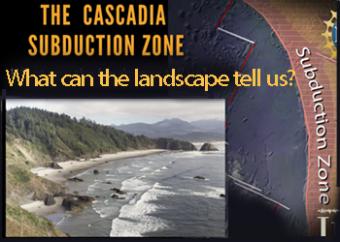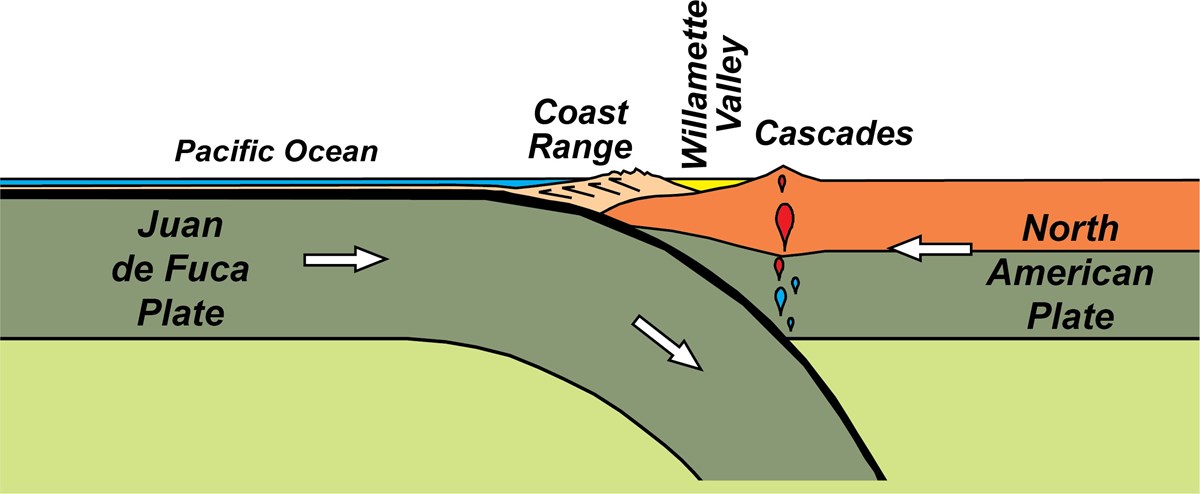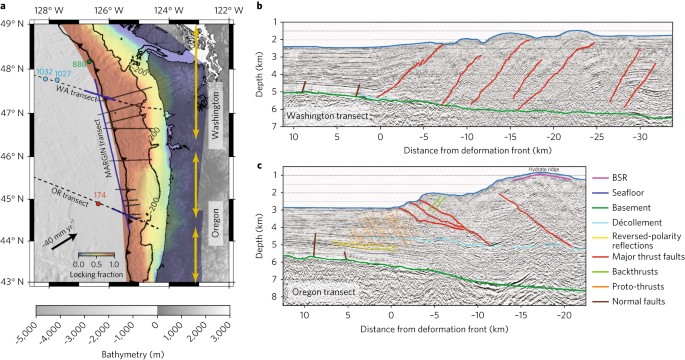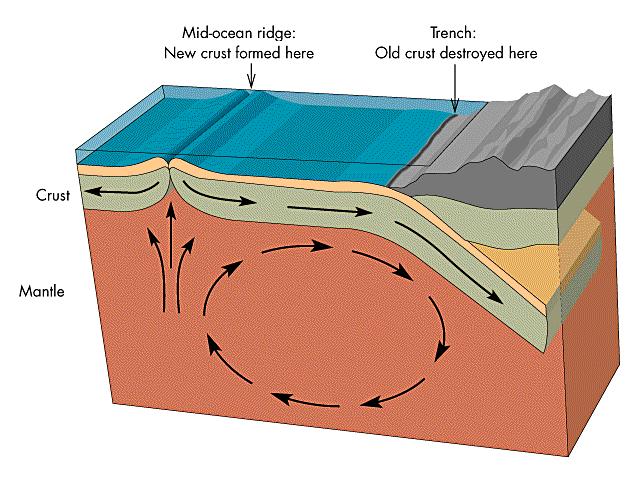Sea Floor Feature Cascadia Subduction Zone Deep Sea Trench

Oceanic trenches are a distinctive morphological feature of convergent plate boundaries along which lithospheric plates move towards each other at rates that vary from a few millimeters to over ten centimeters per year.
Sea floor feature cascadia subduction zone deep sea trench. Features of the ocean include the continental shelf slope and rise. Features rising up from the ocean floor include seamounts volcanic islands and the mid oceanic ridges and rises. National park service sites in the coastal ranges of washington oregon and northern california contain rugged mountains of rocks that were manufactured in the ocean then scraped off the plate and lifted out of the sea. Deep sea trenches are the topographic expressions of a subduction zone.
The process by which ocean floor sinks beneath a deep ocean trench and back into the mantle is called subduction sub duk shun. What are deep sea trenches. Where the subducting slab bends downward a deep sea trench forms. The probable explanation lies in the rate of convergence between the juan de fuca and north american.
It separates the juan de fuca and north america plates. Cascadia subduction zone in the pacific northwest of the united states. Below the ocean floor there are a few small deeper areas called ocean trenches. Ocean trenches and accretionary wedges.
Where is the cascadia subduction zone and what happens there what are deep sea trenches a narrow elongated depression of the deep ocean floor parallel to the trend of a volcano arc. Trenches capture a lot of sediment from nearby land masses much of which is carried down along with the slab. The pacific northwest is an exciting place to observe geologic processes in action. In a process taking tens of millions of years part of the ocean floor sinks back into the mantle at deep ocean trenches.
Cross section through cascadia subduction zone showing subdivision into a zone of stable sliding closest to the trench the locked zone subject to great earthquakes the zone of episodic tremor and slip possibly related to high fluid pressure epicenters in fig. Oceanic trenches are topographic depressions of the sea floor relatively narrow in width but very long. The deepest of these is the mariana trench at over 36 000 feet below sea level. As subduction occurs crust closer to a mid.
The result is a topographic depression where the oceanic plate comes. The ocean floor is called the abyssal plain. There are some unusual features at the cascade subduction zone where the juan de fuca plate sinks beneath the north american plate there is no deep trench seismicity earthquakes is less than expected and there is evidence of a decline in volcanic activity over the past few million years. 4 25 and deep zone of stable sliding extending beneath the volcanic arc.
These oceanographic features are the deepest parts of the ocean floor.



















